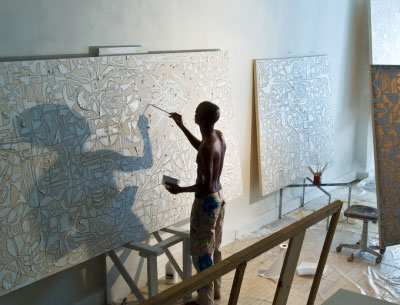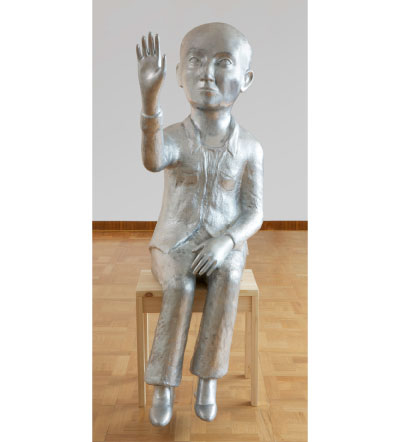

Victor Matthews in his Studio. Photography by Steven Lowy. All artwork by Victor Matthews. Courtesy of Wendt Gallery 2010. (Click images to enlarge)

On a visual level there is a rightness to the way Matthews is using space that is unmistakable, an invisibly constructed symmetry and balance. The paintings have a Modernist sensibility. Set on a palate of white, the interplay between the textures of paint and the treated, raw-colored canvas is a harmonious and shifting affair, demarcated by a strong presence of the two-dimensional — of line. This is where the works begin, with an unchangeable, fluid drawing in wax pencil that is both conceived and created in the same moment. The artist doesn’t do studies, relying instead on a second-sense for both the beauty and the infinite possibilities in the bisecting of space. As Brice Marden has observed, Victor Matthews has “the line”.




 Facebook
Facebook Permalink
Permalink Digg
Digg Reddit
Reddit LinkedIn
LinkedIn StumbleUpon
StumbleUpon Tumblr
Tumblr

